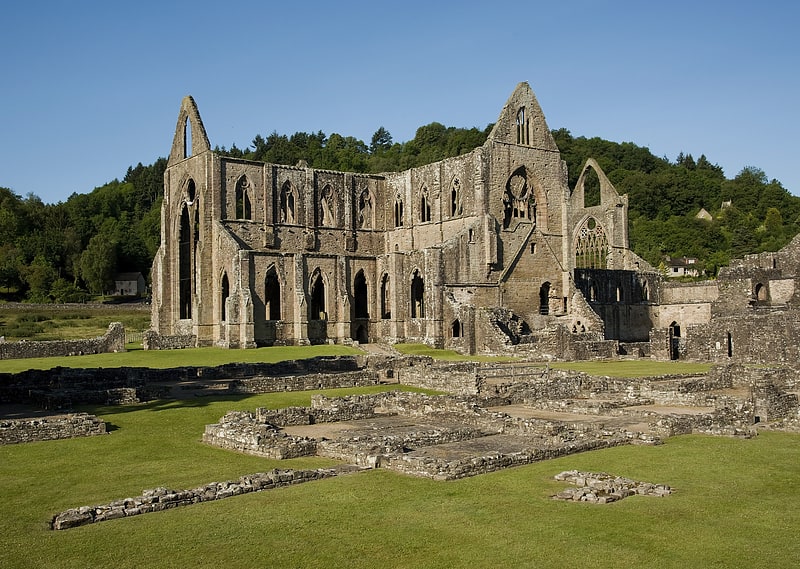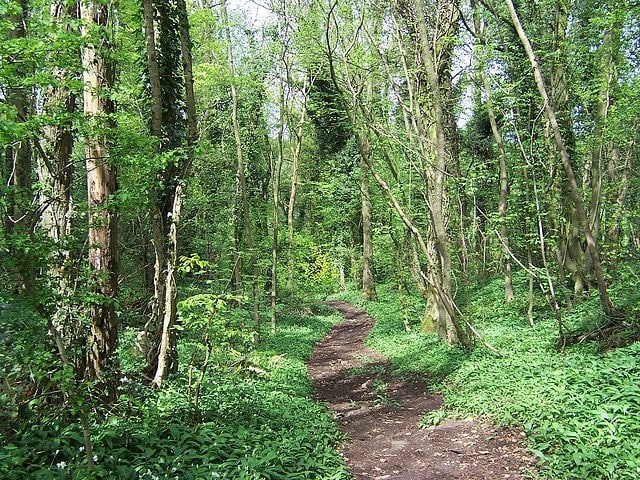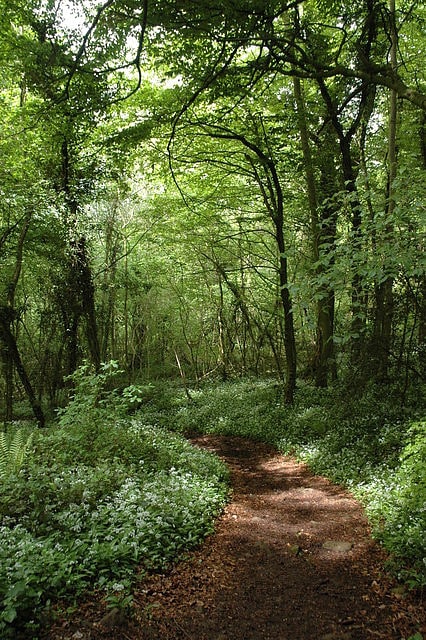Discover 5 hidden attractions, cool sights, and unusual things to do in Tintern (United Kingdom). Don't miss out on these must-see attractions: Tintern Abbey, Shorn Cliff and Caswell Woods, and Devil's Pulpit. Also, be sure to include Lippets Grove in your itinerary.
Below, you can find the list of the most amazing places you should visit in Tintern (Wales).
Table of Contents
Tintern Abbey

Cistercian site with iconic Gothic ruins. Tintern Abbey was founded on 9 May 1131 by Walter de Clare, Lord of Chepstow. It is situated adjacent to the village of Tintern in Monmouthshire, on the Welsh bank of the River Wye, which at this location forms the border between Monmouthshire in Wales and Gloucestershire in England. It was the first Cistercian foundation in Wales, and only the second in Britain.
The abbey fell into ruin after the Dissolution of the Monasteries in the 16th century. Its remains have been celebrated in poetry and painting from the 18th century onwards. In 1984, Cadw took over responsibility for managing the site. Tintern Abbey is visited by approximately 70,000 people every year.[1]
Shorn Cliff and Caswell Woods

Shorn Cliff And Caswell Woods is a 69.2-hectare biological Site of Special Scientific Interest in Gloucestershire, notified in 1986. The site is listed in the 'Forest of Dean Local Plan Review' as a Key Wildlife Site.
The site lies in the Forest of Dean in the Wye Valley Area of Outstanding Natural Beauty. Both the Cliff and Woods are on Carboniferous Limestone and are on the east slopes of the Lower Wye Gorge which is also notified as an SSSI. This continuous belt of woodland stretches from Brockweir to Tutshill. The woodlands of the lower Wye Valley are one of the most important areas in Great Britain for woodland conservation. The woods lie within a matrix of semi-natural habitats and unimproved grassland. This contributes to the diversity and richness of this area of southern Britain.
Wye Valley Woodlands/ Coetiroedd Dyffryn Gwy are recognised as a Special Area of Conservation (SAC) under the EU Habitats Directive.[2]
Devil's Pulpit

The Devil's Pulpit is a rocky limestone outcrop and scenic viewpoint in the Forest of Dean District of Gloucestershire, England, within the Wye Valley Area of Outstanding Natural Beauty. It is known for its views across the River Wye to Tintern Abbey, which stands on the opposite bank in Monmouthshire, Wales.
Access is from the Offa's Dyke Path, and the site is close to the Offa's Dyke earthwork itself. It is possible to climb up onto the flat plateau of the rock, which can accommodate a few people. In the hollow behind the rock lies an ancient yew tree, its roots grown into and around a pile of stone.
Legend holds that from here the devil would taunt the monks and occupants of Tintern Abbey below.[3]
Lippets Grove

Lippets Grove is a 5-hectare nature reserve in Gloucestershire. The site was leased from the Forestry Commission in 1987 and is managed by the Gloucestershire Wildlife Trust. The site is listed in the 'Forest of Dean Local Plan Review' as a Key Wildlife Site.[4]
St Anne's House

Building. St Anne's House, Tintern, Monmouthshire, is a house of early medieval origin which includes elements of the gatehouse and chapel of Tintern Abbey. The building was reconstructed in the mid 19th century, when it was the home of John Loraine Baldwin, founder of the I Zingari Cricket Club.[5]